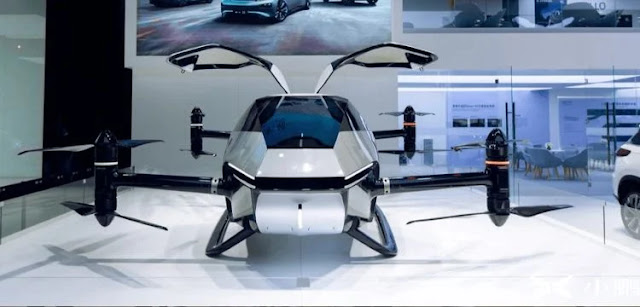Test Flight of China's Air Taxi Successfully Concluded.
China has recently accomplished an achievement by effectively testing a two-ton electric vertical take-off and setting down aircraft, ordinarily alluded to as an "air taxi." Created by Shanghai Aviation , this innovation air taxi, named M1, boats great particulars.
Estimating 10 meters in length, 3 meters in height, and highlighting a wingspan of 15 meters, the M1 weighs 2 tons. It has a plan scope of 250 kilometers and a cruising speed of 200 kilometers each hour, easily obliging 5 individuals with a most extreme burden limit of 500 kg.
What separates the M1 is its capacity for vertical take-off and landing, eliminating the requirement for a conventional runway. Looking like a robot, this electric aircraft works on power, guaranteeing lower noise levels and zero carbon emission. Its lightweight carbon fiber covering works with productive gathering, requiring simply 2 to 3 people.
China has situated itself as a worldwide forerunner in the improvement of automated flying vehicles (UAVs) and electric vertical take-off and setting down aircraft (eVTOL). The effective testing of the M1 highlights China's obligation to progressing imaginative and maintainable transportation arrangements.
The M1's credits, including its reach, speed, and eco-friendly design, position it as an expected huge advantage in urban mobility. Electric air taxis can possibly change transportation by giving effective and harmless to the ecosystem options, especially in thickly populated urban areas wrestling with traffic congestion.
As technology advances, China's steps in electric flight signal a push toward a future where air taxis could turn into a common sight, acquainting another aspect with public transportation. With its effective test, the M1 fills in as a demonstration of China's mastery in flying technology and its devotion to forming the future of transportation.






Post a Comment